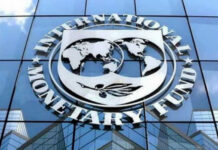At first, the police knocked. Then they tried to kick the door down.
Protests over low wages had erupted at dozens of garment factories in Bangladesh, one of the top suppliers of clothing for global brands like H&M and Gap, and the officers had come to question Jahangir Alam, the president of a local trade union in Ashulia, a suburb of the capital, Dhaka. They told his wife that he would be back within a few hours.
That was a month ago.
Instead, his wife said, Mr. Alam has sat in a jail cell so dark he could not see his own hands. She said they had spoken briefly when she finally tracked him down to a Dhaka court.
Mr. Alam is one of at least 14 labor activists and workers who have been detained since the unrest began in December, according to arrest records. The demonstrations disrupted work at factories that supply clothing to global fashion companies like Inditex of Spain, owner of the Zara brand, and PVH, which owns the Tommy Hilfiger brand. The police say the unrest has led to the suspension or firing of roughly 1,500 workers, many of whom took part in the protests.
The police have accused the activists of inciting vandalism and other crimes, and several factories have pressed charges against many of their workers.
But labor rights groups say the government is trying to scare workers into silence by detaining innocent people. They say the detentions, and the looming risk of more arrests, are the biggest setback for workers since the collapse of Rana Plaza, a building that housed garment factories, where more than 1,100 people died in 2013.

That tragedy, one of the worst industrial disasters in history, exposed major safety hazards at factories in Bangladesh, which churns out a steady stream of low-cost goods. And it prompted some of the world’s biggest brands to push for better conditions for the workers who make their clothes.
By some measures, conditions have improved. But the brands now say the arrests and firings could undermine the progress they have made.
In letters to Bangladesh’s prime minister, Sheikh Hasina, and other officials, retailers urged the government to take action to protect workers, including addressing wage issues that had led to the protests. The minimum wage in Bangladesh is 32 cents an hour.
They stopped short, though, of threatening further action.
“Such situations damage the industry’s reputation and confidence levels, which we, together with the government and social partners, are all working so hard to bolster,” wrote Rob Wayss, the executive director of the Accord on Fire and Building Safety in Bangladesh. The accord, a coalition of retailers, is dedicated to improving safety for the country’s garment workers.
Gap, in a separate letter, said it was troubled by the recent events, and urged officials to ensure that no one was targeted “solely because of any association with a trade union or other group.”

The prime minister’s office did not respond to repeated requests for comment.
Bangladesh exports billions of dollars’ worth of clothes each year, making it the world’s second-largest exporter of ready-made garments after China. But its factories are efficient for some of the same reasons that they have been deadly: overcrowded buildings, limited oversight and a government that has historically repressed workers’ efforts to organize and fight for better conditions.
In the wake of the Rana Plaza collapse, retailers formed two coalitions dedicated to improving the lives of workers: the accord, led by H&M, and the Alliance for Bangladesh Worker Safety, which includes Gap and Walmart.
Both groups have created safety standards and mechanisms to enforce them, although the accord, with a legally binding arbitration provision, is largely seen as the stronger of the two. The alliance has no such clause, but it can impose financial penalties and expel members that violate its terms.
Both groups point to progress, like the installation of fire doors and regular safety inspections. But as international attention has waned in the years since Rana Plaza, worker rights groups have expressed concern that the gains could be lost.
“Now the spotlight is off Bangladesh,” said Richard Appelbaum, a labor and worker rights expert at the University of California, Santa Barbara. “The government is responding more typically as it would have responded several years ago, if it could have.”

The police came for Mr. Alam at night, said his wife, Jhorna Begum. When he did not return after several days, Ms. Begum scraped together about $12 to pay a lawyer who helped track him down to a local jail. The couple saw each other briefly when Mr. Alam appeared in court, just long enough for them to shout at each other across a crowded room.
With two children at home, Ms. Begum said she could not afford to fight his case. She recently returned to work as a machine operator for the Palmal Group, another garment maker.
“We live hand to mouth, waiting for the paycheck at the end of the month,” Ms. Begum said, tears in her eyes. “I don’t know when he’ll get out — how am I supposed to run my family without him?”
While Ms. Begum was willing to give her name to a reporter, many garment industry workers are afraid to speak out for fear of reprisals by the government. Labor rights workers suspect that agents of the government or factory owners ransacked a number of union offices after the protests. And the death of Aminul Islam, a labor activist who was found tortured and killed in 2012, is still fresh in many minds.
The complaints against the 14 people who have been arrested also include charges that could cover more than 1,000 possible suspects — a tool that can help the police arrest people in the future, according to labor lawyers. Some of the people who were arrested, for example, had been named in an unrelated political violence case that has been open since 2015.“When they find someone they want to put in jail, they enter that person’s name into the case,” said Jyotirmoy Barua, a lawyer based in Dhaka, who is representing protesters who have been charged with conspiring to harm the state. “The cases are creating unrest, fear.”This month, protesters gathered in Dhaka, chanting and holding up signs as a plainclothes officer took notes nearby.Abul Hossain, the president of the Dhaka chapter of the Workers’ Party of Bangladesh, said workers were frustrated by stagnant wages in a country whose cost of living had risen over the past few years. Wages have risen only twice in the past decade, even as inflation has risen as much as 10 percent a year, according to the Bangladesh Bureau of Statistics.

Workers expected their pay to be reviewed last year by a government wage board that can meet every three years. When that did not happen, they started protesting.
Siddiqur Rahman, president of the Bangladesh Garment Manufacturers and Exporters Association, a trade association that represents factory owners, said factories, too, had come under pressure: Costs have risen 17.5 percent annually for the last two years, he said, even as global clothing prices have decreased.
Mr. Rahman added that while global retail brands had called on Bangladeshi factories to improve safety standards and wages, they had resisted paying higher prices to help compensate for the increased costs.
He also said that fewer than 1,500 employees had been fired, and that some had returned to work.
Both Gap and H&M said that they supported a regular wage review mechanism to ensure stability in the future, and that they were monitoring the situation closely.
Labor advocates, though, say the global companies should be doing more, since billion-dollar brands like H&M have a lot of leverage with local factories and the government.
A spokesman for H&M, Patrick Shaner, said in an email that the company had no plans to change its sourcing arrangements.
Other companies that buy clothes from the factories that are currently pressing charges, including Abercrombie & Fitch, PVH and American Eagle Outfitters, did not respond to requests for comment.
“At a certain point in time you have to wonder just how much the brands and retailers will tolerate,” said Scott Nova, the executive director of the Worker Rights Consortium, a labor rights group based in Washington that is among the most active nonprofits working in Bangladesh’s garment industry. “They can tell the factories to drop these charges.”
Source: NYTimes










